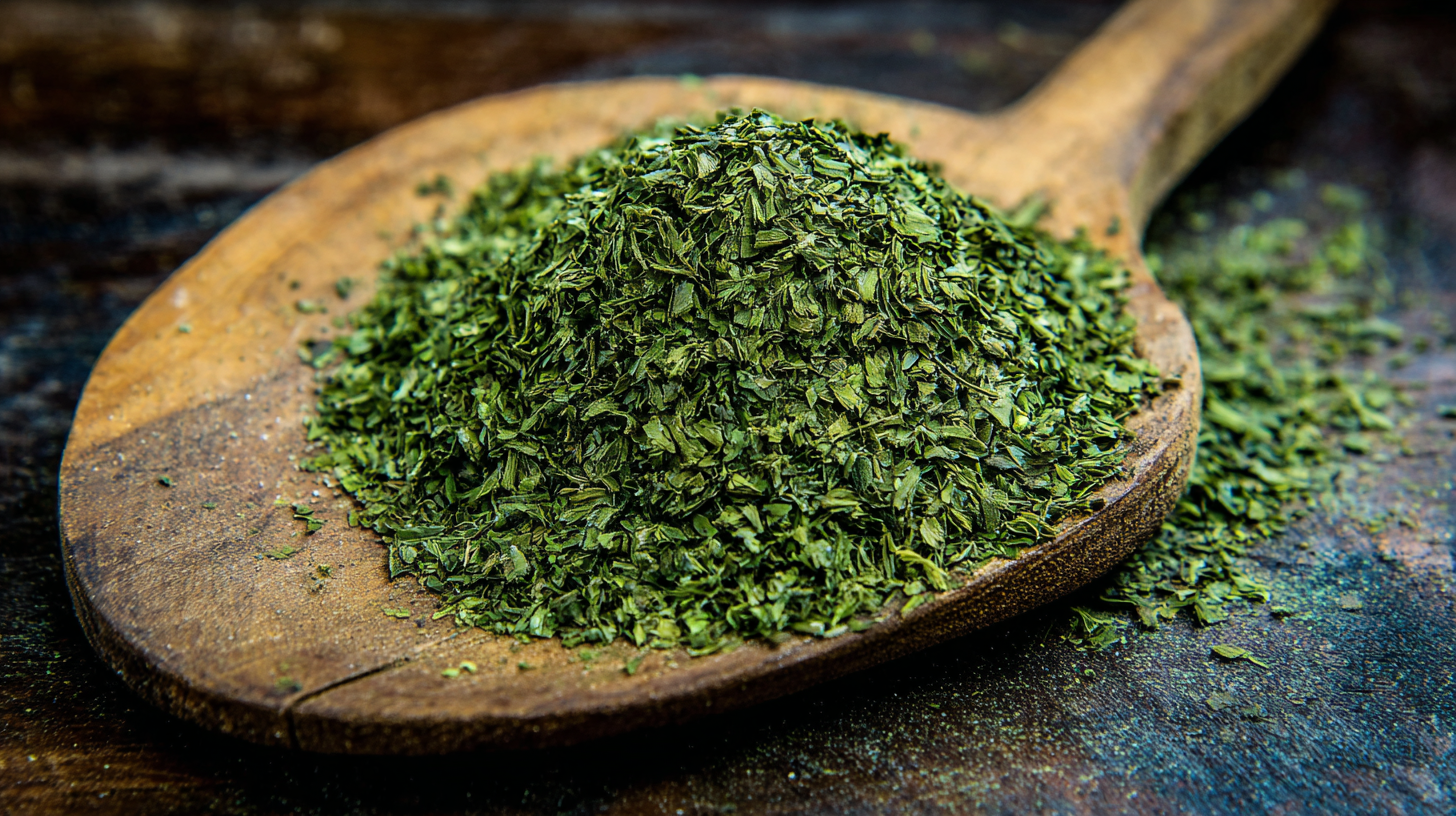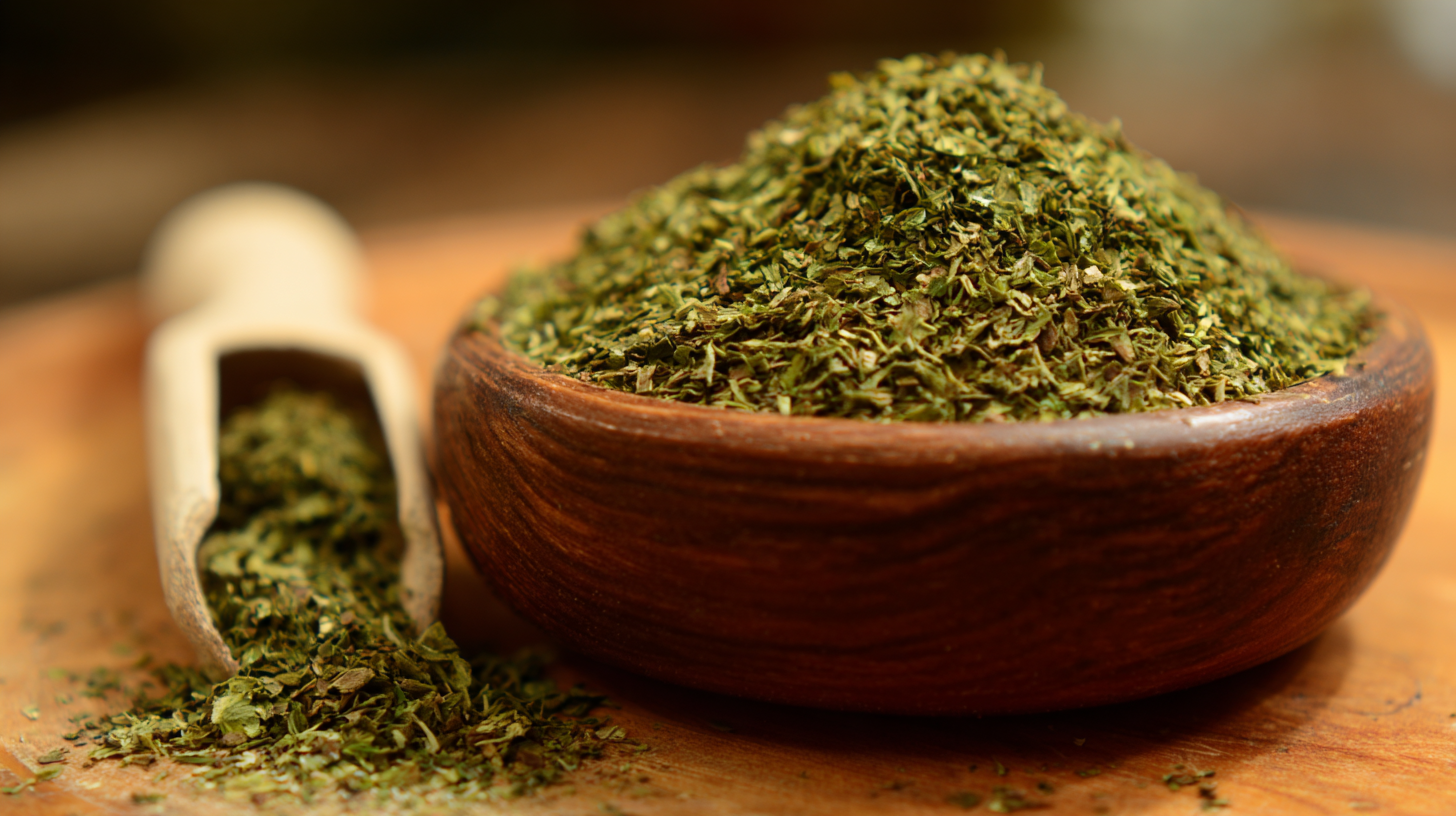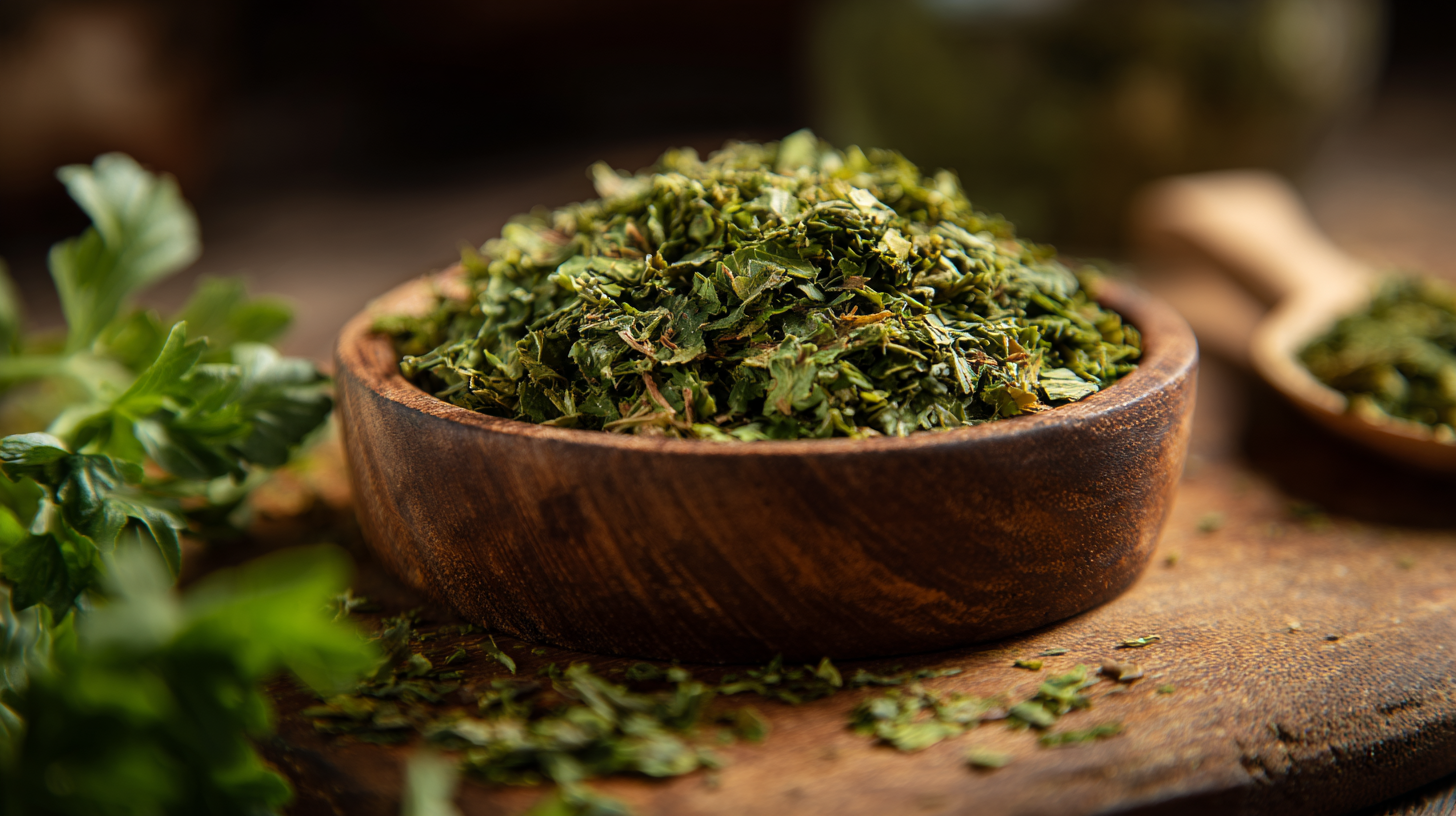 Dried parsley, a staple herb in culinary traditions worldwide, is not only valued for its distinct flavor but also revered for its impressive nutritional profile. According to a report from the International Journal of Food Sciences and Nutrition, dried parsley is exceptionally rich in vitamins A, C, and K, along with essential minerals such as iron and potassium. This versatile herb has been shown to possess antioxidant properties and anti-inflammatory effects, making it not just a garnish, but a powerful addition to health-conscious diets.
Dried parsley, a staple herb in culinary traditions worldwide, is not only valued for its distinct flavor but also revered for its impressive nutritional profile. According to a report from the International Journal of Food Sciences and Nutrition, dried parsley is exceptionally rich in vitamins A, C, and K, along with essential minerals such as iron and potassium. This versatile herb has been shown to possess antioxidant properties and anti-inflammatory effects, making it not just a garnish, but a powerful addition to health-conscious diets.
With the global dried herb market projected to reach $3 billion by 2025, the demand for ingredients like dried parsley, which enhance both taste and nutrition, is steadily growing. As we delve deeper into the benefits and culinary uses of dried parsley, we unveil its potential to elevate everyday meals while contributing significantly to our health and well-being.
Dried parsley, a shelf-stable herb derived from fresh parsley, offers both flavor and nutritional benefits. This versatile ingredient is made by drying the leaves and can retain many of the vitamins and minerals found in its fresh counterpart. Used in a variety of cuisines, dried parsley adds a subtle earthiness and elegance to dishes, complementing everything from soups to salads. Its concentrated flavor means a little goes a long way, making it an economical choice for enhancing meals.
Tips for incorporating dried parsley into your cooking include adding a teaspoon to marinades or sauces to deepen the flavor profile. It pairs beautifully with garlic and lemon, creating a vibrant combination for seafood or grilled vegetables. Additionally, sprinkling dried parsley over finished dishes not only augments flavor but also lends a touch of color, making your meals more visually appealing. When using dried parsley, remember that it is best added earlier in the cooking process to allow its flavors to fully infuse into the dish.

Dried parsley, often overlooked, is a nutritional powerhouse that warrants attention for its numerous health benefits. This herb is more than just a garnish; it can be classified as a superfood due to its impressive nutrient profile. Rich in vitamins A, C, and K, dried parsley aids in immune function and promotes healthy skin. A study analyzing over 1,000 raw foods suggested that parsley ranks favorably for its balance of essential nutrients, making it a valuable addition to a balanced diet.
Moreover, the health benefits of dried parsley extend beyond basic nutrition. The herb contains flavonoids and antioxidants that can help neutralize harmful free radicals in the body. Its slight peppery and bitter flavor not only enhances the taste of dishes but also contributes to its medicinal qualities by improving digestion and reducing inflammation. Including dried parsley in your meals can thus support overall well-being while satisfying your palate. As culinary trends evolve, integrating such superfoods into everyday cooking can provide both health benefits and delightful flavor.
Dried parsley is not only a flavorful herb but also a nutritional powerhouse, rich in essential vitamins and minerals. This chart illustrates the impressive nutritional content per 100 grams of dried parsley, showcasing its potential as a superfood.
Dried parsley, often overlooked as a mere garnish, is a culinary powerhouse that can elevate a variety of dishes. With its vibrant flavor profile and appealing green color, dried parsley enhances soups, stews, sauces, and salads. According to the USDA Nutrient Database, a tablespoon of dried parsley contains notable amounts of vitamins A, C, and K, making it not just a flavorful addition but also a nutritious one. The aromatic elements found in dried parsley can complement savory dishes, providing a depth of flavor that fresh herbs sometimes cannot.
In particular, the use of dried parsley in spice blends and seasoning mixes is gaining popularity among chefs and home cooks alike. Professional culinary reports indicate that dishes seasoned with dried herbs, like parsley, tend to have a more complex flavor character, allowing chefs to reduce the need for additional salt and fat. Furthermore, its shelf-stability makes dried parsley a convenient option for infusing flavor without the constraints of perishable ingredients. This versatility makes it an essential component in both home cooking and professional kitchens, demonstrating the significant culinary impact of this humble herb.
| Nutritional Component | Amount per 1 tbsp (6g) | Health Benefits |
|---|---|---|
| Calories | 6 kcal | Low calorie seasoning |
| Vitamin K | 25.2 mcg | Supports bone health |
| Vitamin C | 4.6 mg | Boosts immune function |
| Iron | 0.4 mg | important for red blood cell production |
| Calcium | 11 mg | Supports bone health |
| Antioxidants | Various | Protects cells from damage |
Storing dried parsley properly can significantly enhance its flavor and nutritional benefits. Unlike fresh herbs, dried parsley is often more concentrated, providing a rich source of vitamins A, C, and K, as well as essential minerals like iron and manganese. To maintain its potency, it’s crucial to store dried parsley in an airtight container in a cool, dark place. According to industry reports, herbs stored in optimal conditions can retain their flavor and aroma for up to two years, ensuring you enjoy the full benefits of this versatile herb.
For maximum freshness, avoid exposing dried parsley to moisture and direct sunlight. Unlike fresh basil, which should be treated like a bouquet for longevity, dried parsley should be kept sealed away from air exposure to prevent it from becoming stale. To keep your dried parsley as vibrant as possible, consider using a vacuum-sealed bag or a tightly-lidded glass jar. Remember, the way you store your dried herbs not only affects their lifespan but also their culinary prowess, enabling you to elevate your dishes with robust and fresh flavors.

Dried parsley, often overlooked in favor of fresh herbs, is a powerhouse of nutrients that can significantly contribute to our health. Rich in vitamins A, C, and K, it supports immune health, ensuring our body can fend off illness more effectively. According to a report from the USDA, just one tablespoon of dried parsley provides nearly 10% of the daily value for vitamin K, which is essential for bone health and blood clotting. Additionally, its high antioxidant content helps combat oxidative stress, reducing inflammation and the risk of chronic diseases.
Incorporating dried parsley into your diet is convenient and offers various health benefits. It's a natural source of flavonoids and carotenoids, compounds linked to heart health and improved digestion. Studies highlight that the anti-inflammatory properties of dried parsley can aid in reducing symptoms of arthritis and other inflammatory disorders.
Tips for using dried parsley: sprinkle it into soups and stews during the cooking process to enhance flavor and nutritional value. Alternatively, blend it into salad dressings or marinades for a fresh green kick. Remember to store dried parsley in an airtight container away from light to maintain its potency for longer.
